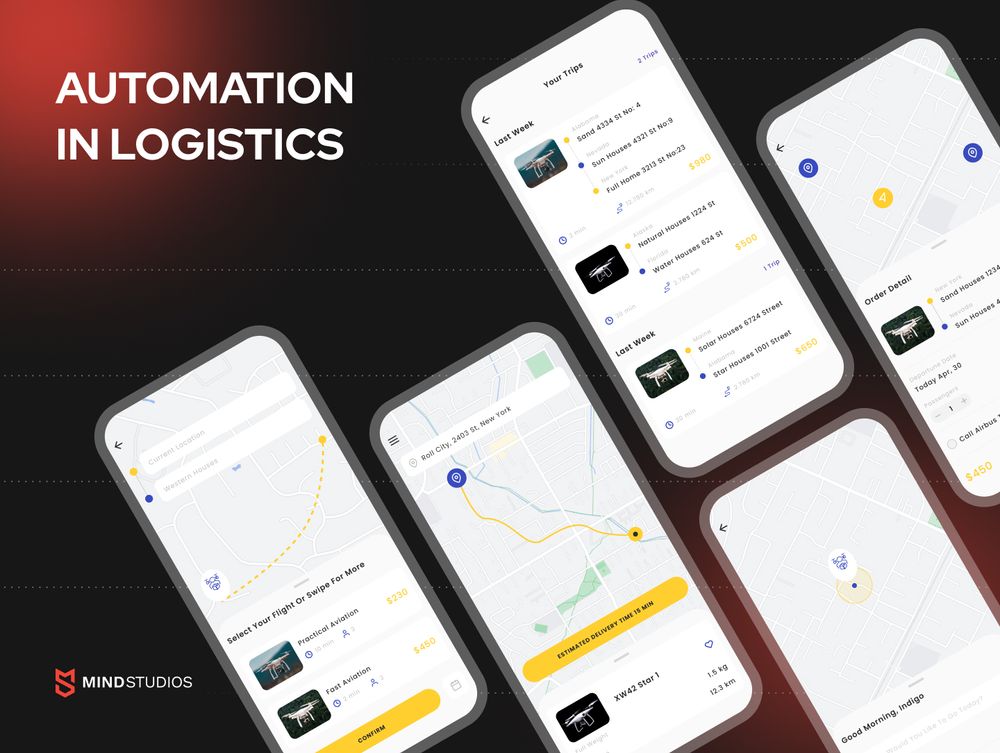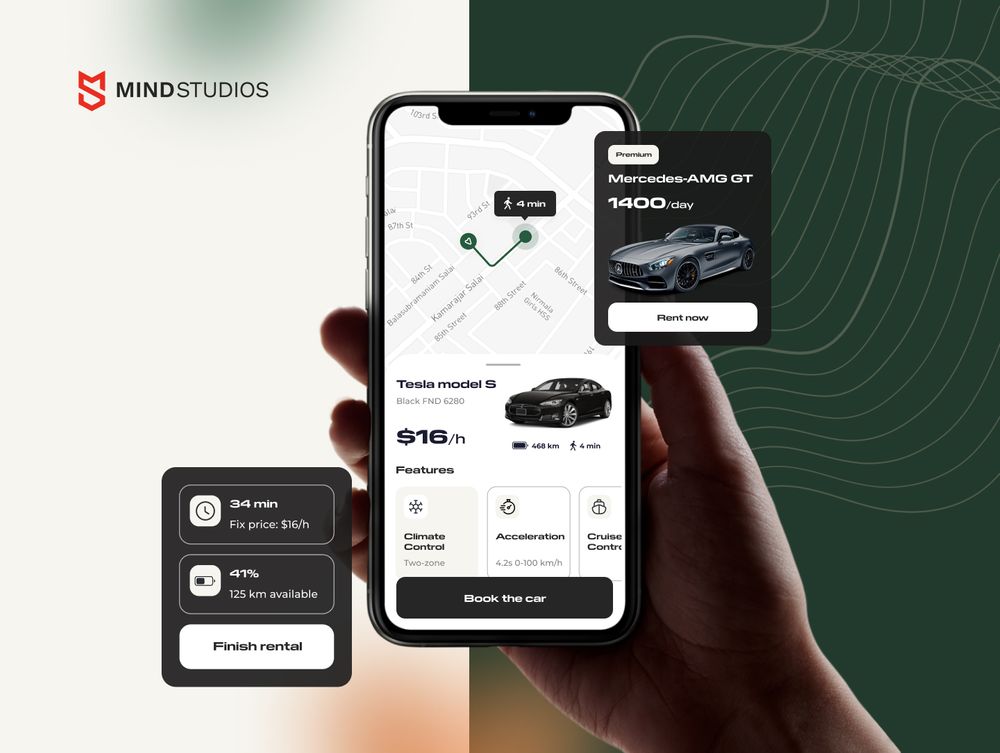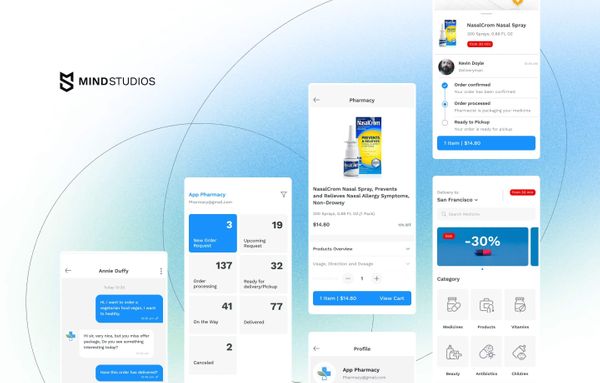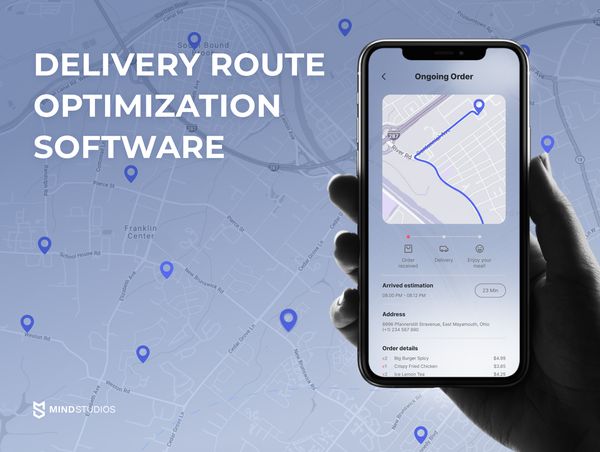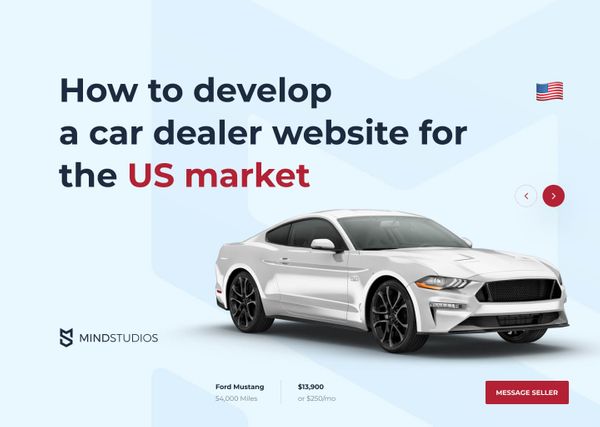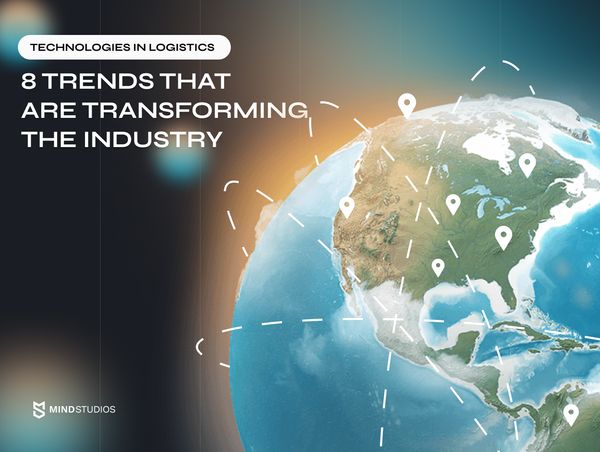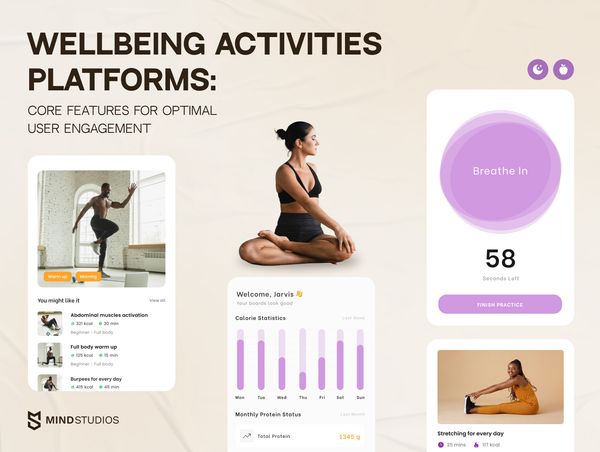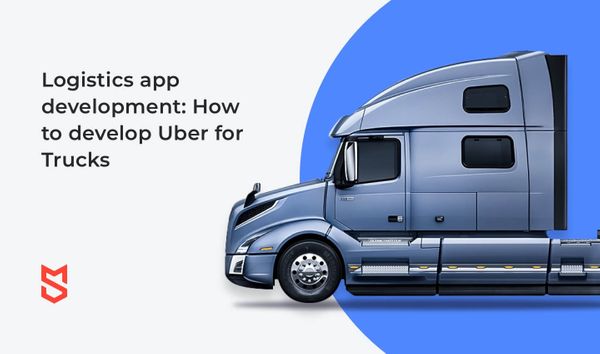
If you’d like to know how to develop an Uber-like app for a logistics business, catch a ride with us as we explore this branch of on-demand transport and delivery services.
Recently, we described the process of developing an app for on-demand grocery delivery services. Before that, we shared an article about building food delivery apps. Today, we’ll tackle the not-yet-too-crowded category of logistics mobile apps. Let's look at the logistics app development in more detail.
Contents:
- Why the trucking industry needs mobile apps
- How does Uber Freight solve issues in the transportation and logistics sector?
- How to create a mobile app like Uber for trucking
- Features an Uber for truckers app needs
- How much does it cost to develop an Uber for trucks?
Why the trucking industry needs mobile apps
Even in this day and age of digital everything, some industries still struggle with bureaucracy. The logistics and transportation industry is one of them. When Uber Freight was launched in 2017, Uber repeatedly noted how cluttered the logistics business is: It takes a lot of time, effort, and phone calls/emails/faxes to arrange a single shipment and send it on its way.
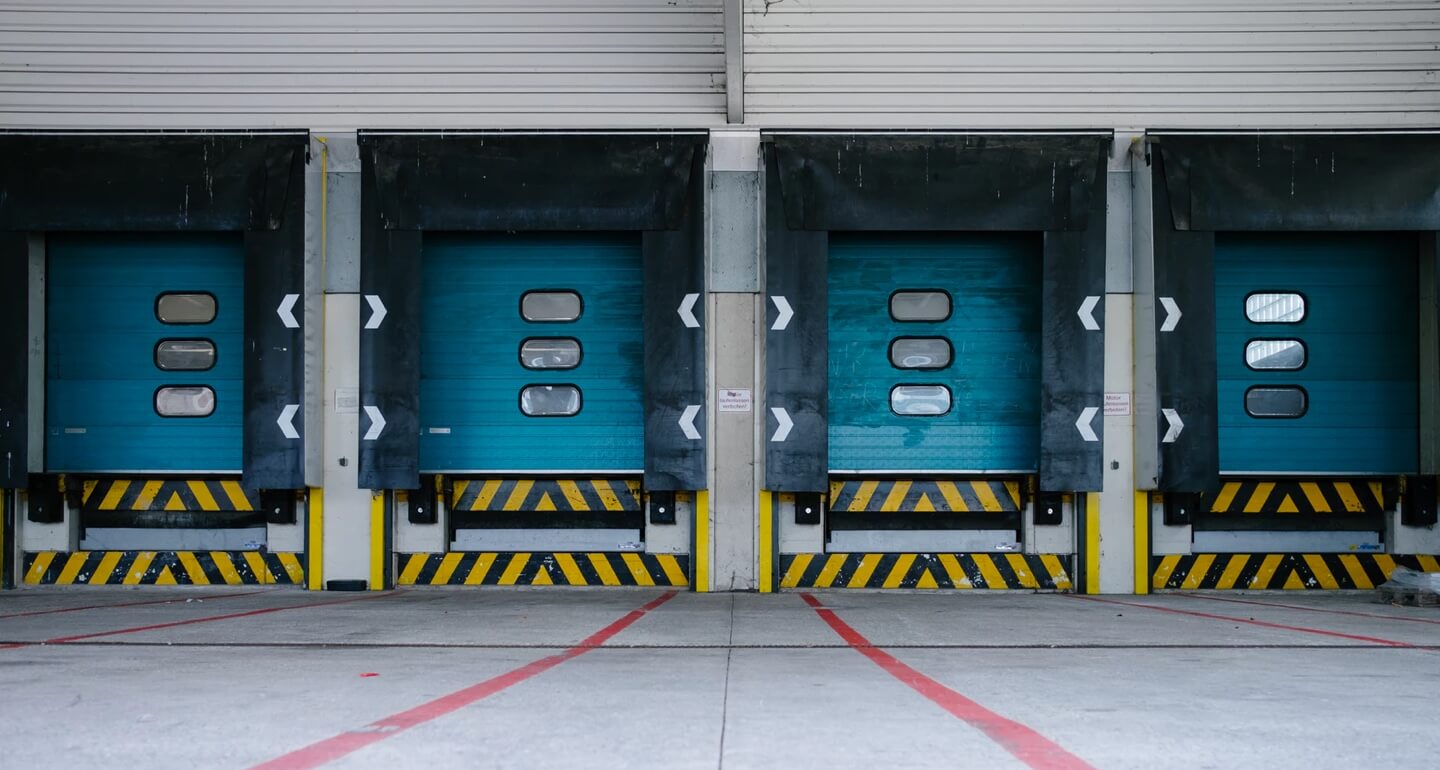
Mobile management solutions can help greatly, removing some paperwork and redundancy from the shipping process. Apps can also enhance the quality of services logistics companies offer.
How does Uber Freight solve issues in the transportation and logistics sector?
Today, everybody knows what Uber is. It’s a service that connects drivers to people in need of a ride. Its simplicity made Uber a revolutionary and global industry leader. And that simplicity is exactly what Uber Freight has brought to the logistics market.
With the help of the Uber Freight app, what used to be a carrier–intermediary–shipper chain has lost the middle link. Carriers and shippers can connect directly. This approach results in fewer errors and communication issues and cuts costs for both carriers and shippers. Additionally, Uber for logistics tremendously shortens the time required for those who need delivery services and those who can provide them to make a deal. It becomes a matter of just a couple taps on a smartphone screen.
How to create a mobile app like Uber for trucking
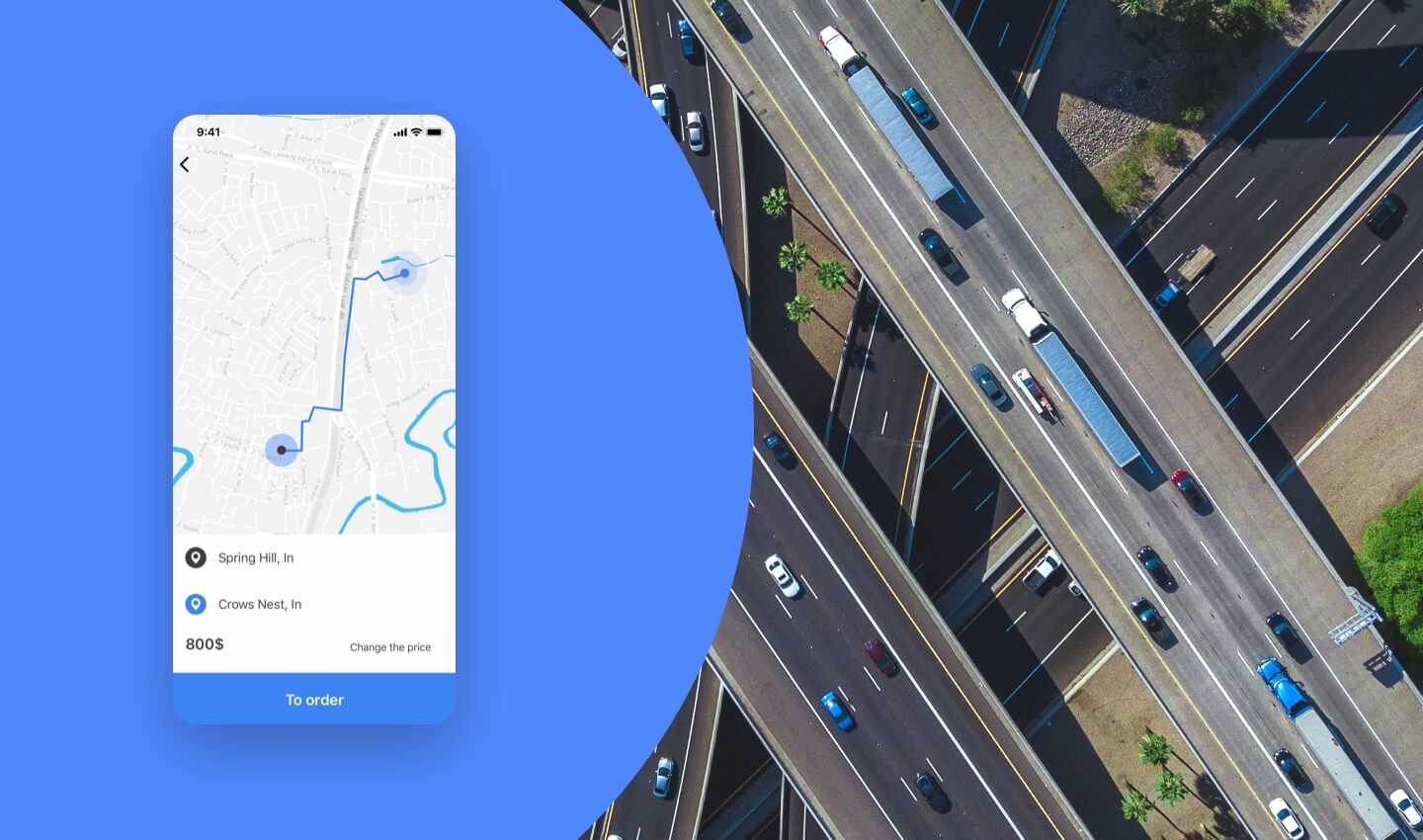
The Uber Freight app isn’t the only one of its kind, though it’s certainly one of the most advertised and, hence, well-known logistics apps on the market. There were logistics apps before it and new apps have been built since its launch. Yours can be one of them. If you work with a professional team that pays attention to detail, your app has the potential to be just as successful as Uber Freight.
Step 1. Decide what kind of logistics app you want to develop
There are two main scenarios:
-
You have your own logistics business with a fleet of trucks and you want an app to expand your business and simplify operations.
-
You aim to only offer a marketplace where carriers can accept orders from shippers.
Uber Freight, like Uber Taxi, is just a marketplace. Uber doesn’t offer carrier services; they offer carriers the opportunity to quickly and effortlessly find customers in the vicinity.
Step 2. Find a development company for your logistics and transportation mobile app
While it’s possible to hire an in-house team of developers to make an Uber for delivery trucks for you, it’s hardly a sensible decision for a number of reasons. It’s way more convenient for most businesses to outsource their app development. A wide range of logistics app development companies and freelance developers all over the world offer top-notch services in this field.
If you’re new to mobile app development and don’t know how to choose a development team in the sea of options, we have a guide that can help you ask the right questions and find the best company: How to Find the Best Mobile App Development Company.
Step 3. Validate your idea
Once you’ve found custom logistics app developers that fit your requirements, they can help you validate your app idea. Validation is an important step in app development, as it includes in-depth market research that will show you how you might tweak your idea and where your app fits in the market. Starting logistics app development without idea validation entails a higher risk that your app will flop, resulting in lost time, effort, and investment.
Step 4. Decide on features for an MVP/MLP
A minimum viable product (MVP) and minimum loveable product (MLP) are both abridged versions of your trucking logistics app. You can launch an MVP or MLP to test the app, gather feedback, find its strong and weak points, and acquire your first users. The main difference between an MVP and MLP is in focus: to help your app get noticed, an MLP offers some kind of unique feature in addition to the minimum must-have features. You can read a more detailed comparison of MVP and MLP in our previous article.
In general, you can use other logistics technologies for your application, but the ones described above are more than enough to create a minimum viable product.
Features an Uber for truckers app needs
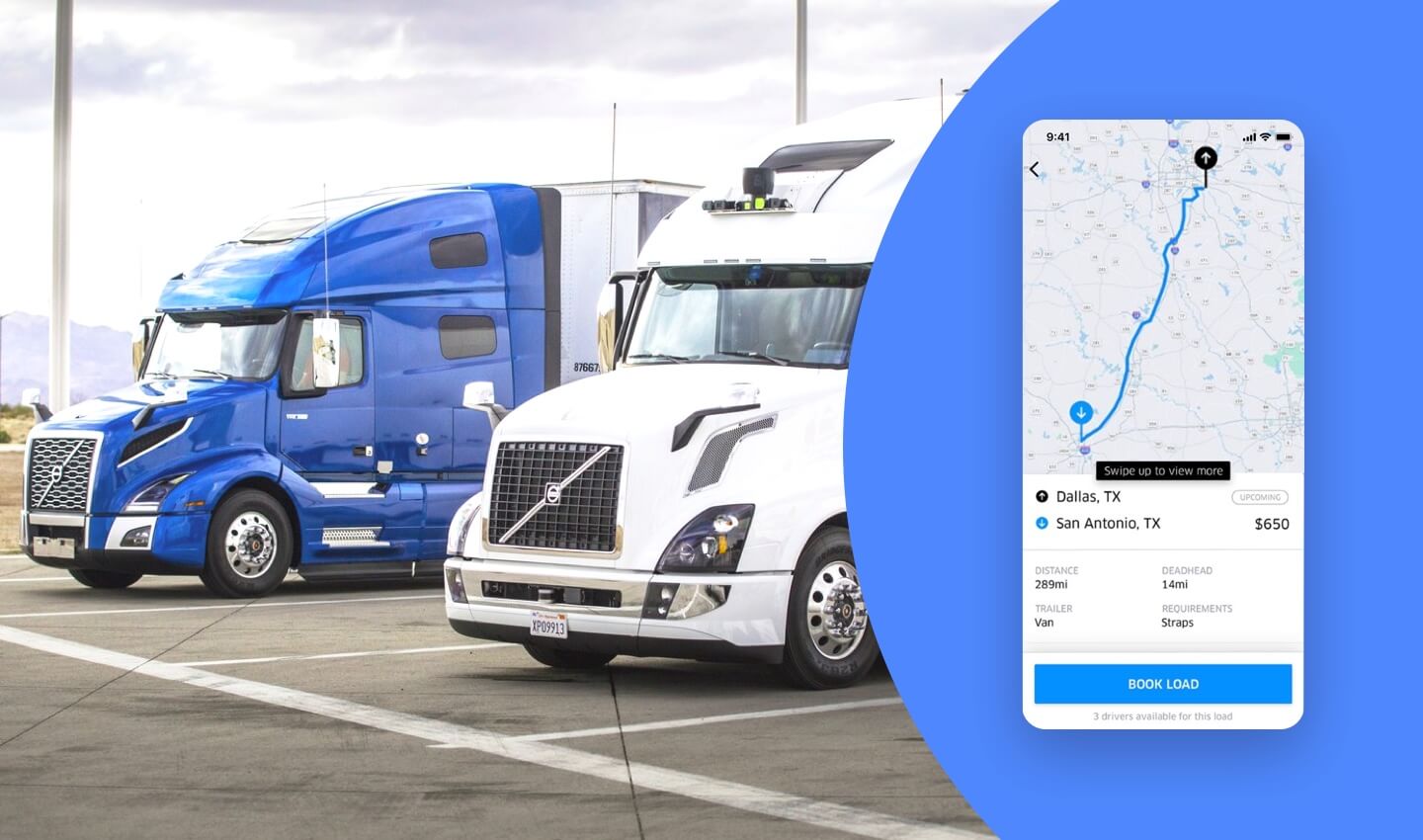
As with most on-demand apps, an on-demand logistics mobile app involves separate apps for carriers and shippers. Or at least several panels, if you decide to go for a combined app.
Note: Combining carrier and shipper panels in a single app makes the app quite heavy; this may result in lag. We recommend building shipper and carrier apps separately when you make an app for logistics.
Features for a shipper app
- Registration and login
This is a traditional feature for most apps, and you’ll need it on both the shipper and driver sides. If you’re aiming to provide services for individuals as well as businesses, we recommend enabling registration and login via social networks or automatic login via email. This will make the process quicker and smoother, to your clients’ delight.
- List of vehicles
In Uber, carriers choose what cargo to accept based on their location, vehicles, shipment destination, etc. But in order for carriers to choose, shippers should be able to pick a type of vehicle for moving their cargo based on its size and weight capacity.
If you own a fleet, you can also allow shippers to choose a vehicle. In this case, you’ll need another feature.
- Vehicle booking
People usually book a taxi when they already need to leave. With cargo shipping, it’s not unusual to plan beforehand. And to avoid situations when a suitable carrier is unavailable, you can implement an option to book a vehicle in advance.
- Alerts and reminders
Life is a busy affair, and it’s normal to forget things. What’s not normal is making a carrier wait because you’ve forgotten the day and time for your shipment. This disrupts schedules, and some carriers charge shippers for wait time. Reminders and alerts from an app can help to avoid this.
Another role of alerts is to notify shippers that their cargo has been delivered.
-
Vehicle tracking
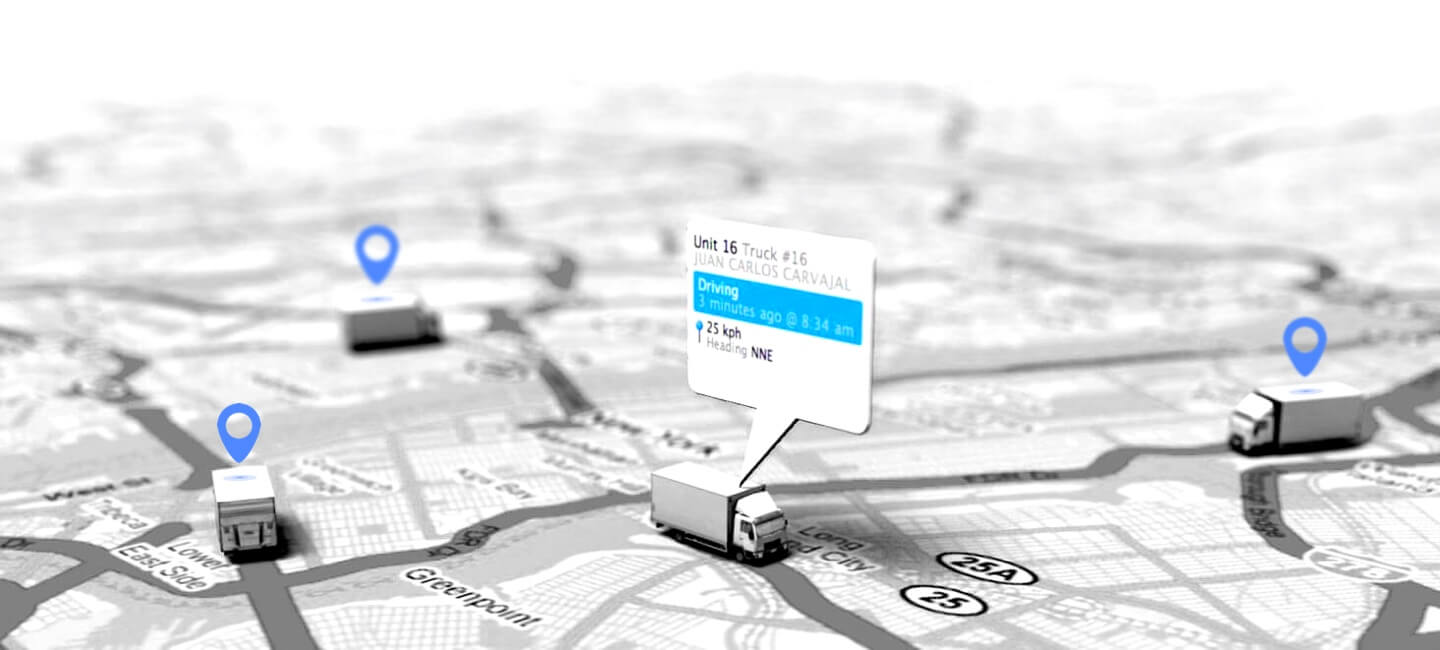
It’s reassuring for shippers to check where their cargo is at any given moment and see if it’s being delivered according to schedule. Tracking can be implemented by accessing the driver’s location via their phone’s GPS.
- Payment gateway integration
Shippers should be able to pay for cargo delivery right from the app, without fussing over cash or bank transfers. To manage that, you’ll need to integrate a payment gateway. Uber uses Braintree to manage payments. Choosing a payment gateway is no easy task, as you need to take a number of things into account. If you can’t decide on your own, you can ask your project manager for advice.
- Ratings and reviews
Allowing shippers to rate carriers helps you monitor the latter. In any business, it’s important to know your partners, as working with the wrong people can cost you reputation, clients, and money.
Features for a carrier app
- Registration and login
Depending on how you select carriers — whether you have your own fleet or private carriers you partner with — the registration process will differ. You can use traditional email registration, offer registration via Facebook, or provide each carrier with a personal login and password after you approve them to make deliveries.
- Shipment details
Before accepting a shipment request in your Uber-like app for logistics, carriers should see all pertinent information about the cargo: dimensions, weight, type (fragile or spillable, for example), pick-up and drop-off locations, date and time of pick-up and/or delivery.
- Sorting and filters
Shipment details should also be sortable when there are many orders available for carriers to choose from. Let carriers filter by date, pick-up location, destination, and type of cargo.
- Request management
Carriers should be able to cancel an order in case of a change in circumstances or accidental acceptance.
-
Route tracking and optimization
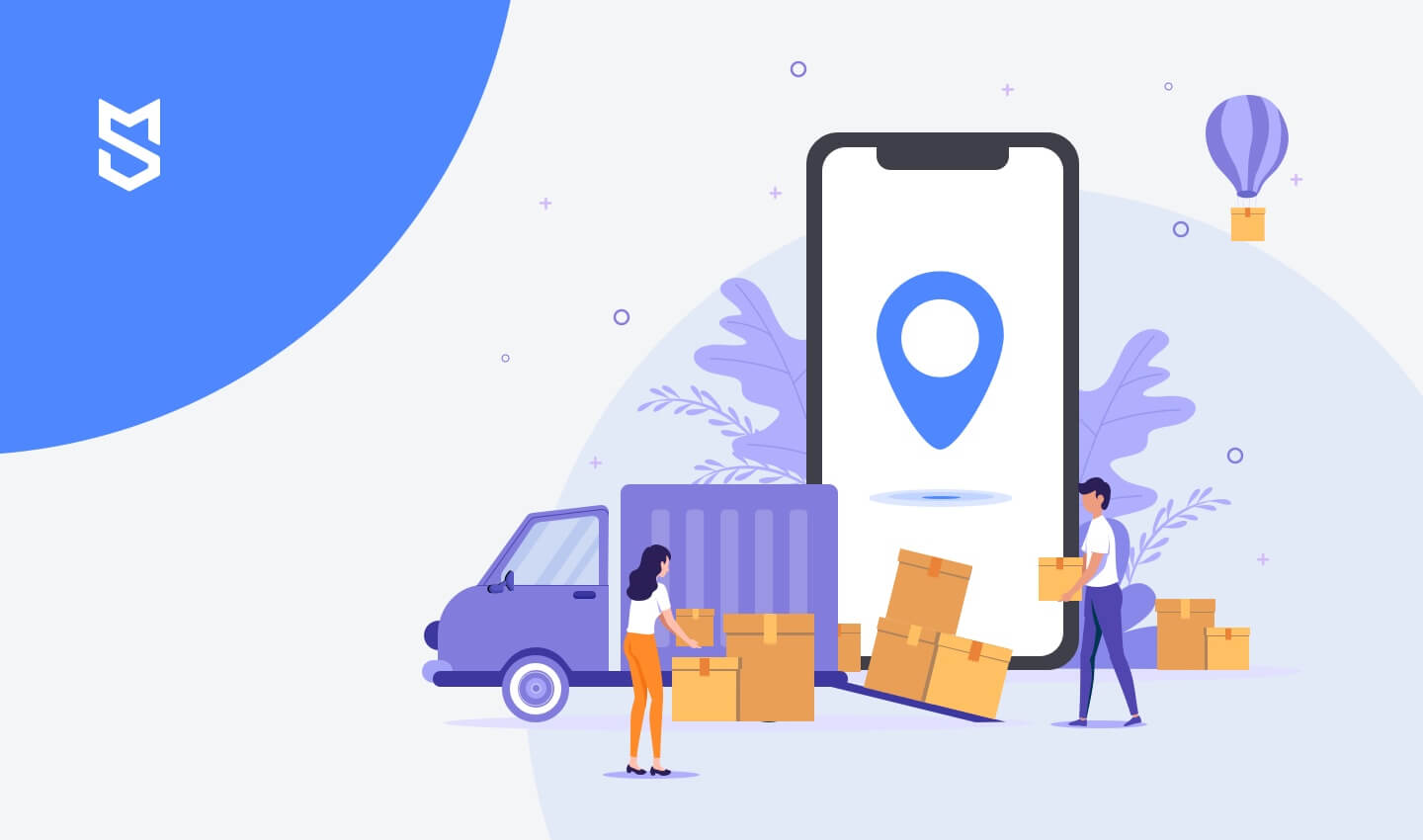
While optimization isn’t strictly a must-have feature, it helps carriers a lot when making deliveries. If you track vehicle routes in real time and adjust routes according to traffic, road repairs, and accidents, it will enhance the services you provide.
- Proof of delivery
When a carrier delivers cargo, they might need to prove delivery to the shipper. This can be done by uploading a photo or document.
Features for the admin panel
The admin panel isn’t a separate app. It’s a web page where the business owner can monitor and manage their business. An admin panel is of utmost importance if you’re developing an Uber for logistics for your own fleet. It needs the following features:
- Dashboard
This is where you’ll see orders — pending and completed — as well as data on shippers, carriers, and vehicles.
- Billing management
Easily check and approve invoices that come through the app.
- Driver monitoring
Check each driver’s location, track where they stop and for how long, and see any pending orders.
- Vehicle monitoring
Check a vehicle’s condition, location, speed, stops, and fuel consumption.
Extra features that will help you win more users
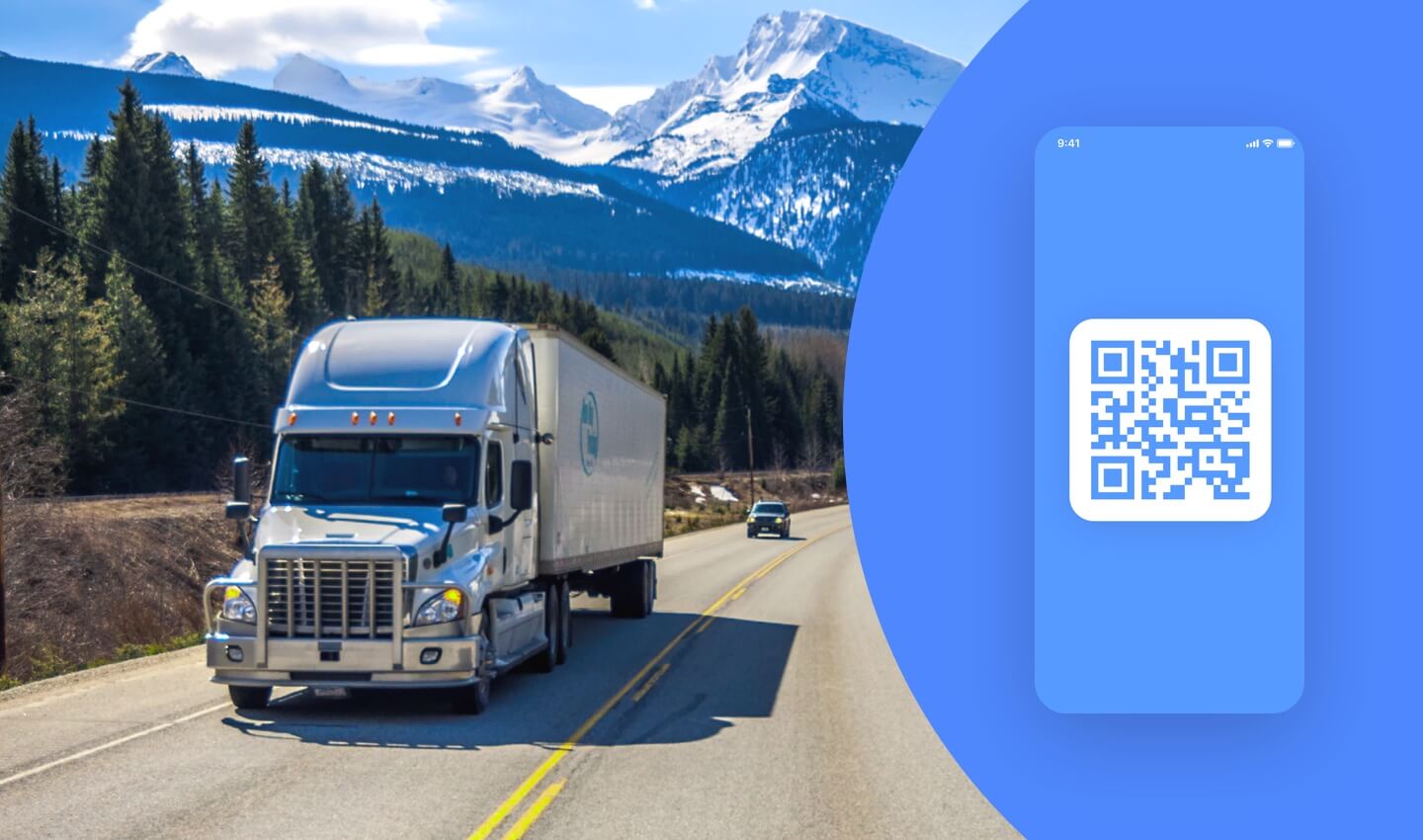
These features aren’t strictly necessary for the proper functioning of a logistics and transportation mobile app. These are optional features that can help your app stand out. Whether you’re planning to take on a giant like Uber or you’ve got your own niche where Uber isn’t too big a threat, having a couple of convenient features won’t hurt.
- Chat
Letting carriers contact shippers for additional details can make a big difference for both sides. Chat can also be used by drivers to notify shippers of any delays and the reasons for them.
- NFC and QR code reader
A QR code reader is a feature usually present in inventory management apps, but it can be of use for shipments as well. QR codes can eliminate the possibility of mixing up cargo, for example.
Near-field communication (NFC) can be used for proof of delivery.
- Support for multiple languages
Even if you’re operating in a single country, chances are that shippers won’t all speak the same language. This isn’t a must-have feature, but it’s nice.
Weak points to pay special attention to
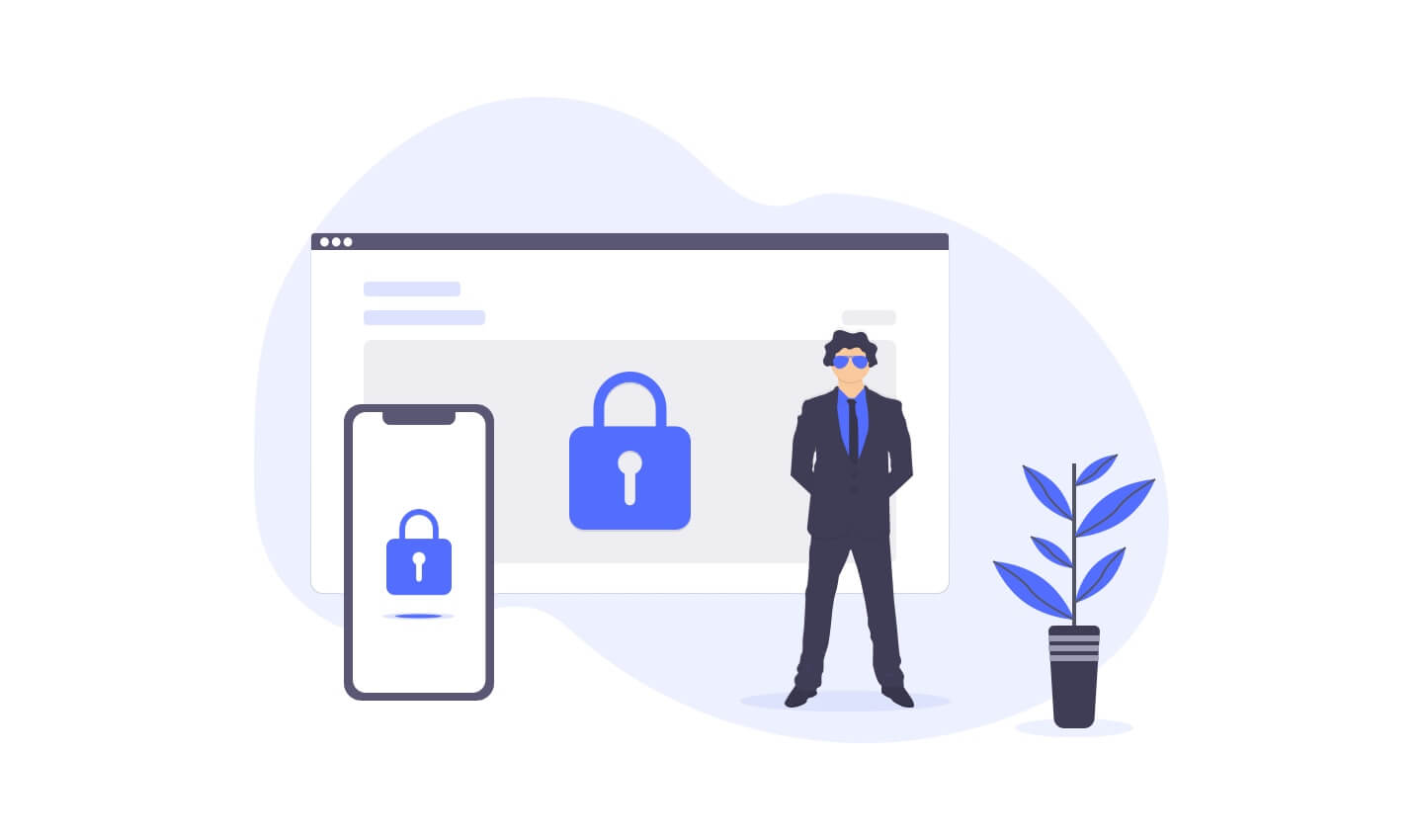
Every business has its hidden hazards. For logistics services, one of these is the security of cargo. If you build an app like Uber for trucking — that is, a marketplace where carriers and shippers find each other — you need to be sure the carriers you work with are honest and reputable. You wouldn’t want stolen or lost cargo to stain your reputation. Therefore, you need a way to check carriers’ credibility and only allow approved carriers to take shipments.
Besides a general check, it’s advisable to either provide carriers with or require them to have cargo insurance to cover damage in case of accidents.
Another issue is the security of data. You’ll be storing carriers’ and shippers’ data on your servers, at least for the time it takes to deliver the goods. This data includes names, addresses, social security numbers, and credit card numbers. All this data must be well protected. Make sure your logistics app development company takes data security seriously.
Finally, if you’re building an Uber-like app for delivery trucks where carriers accept shipments, your developers will need to think of an algorithm to prevent double-booking. This can become a serious issue, especially if you have several partner carriers in the same area.
How much does it cost to develop an Uber for trucks?
At Mind Studios, the cost to make an app like Uber Freight for both iOS and Android will include the work of the following specialists:
- Project manager: 1
- UI/UX designer: 1
- Android developers: 1–2
- iOS developers: 1–2
- Backend developer: 1
- Frontend developer for web admin panel: 1
- QA specialist: 1
The estimated time to build an app like Uber Freight is at least four months, and the approximate development cost will start at about $65,000. These time and price estimates are very rough, of course, since the actual numbers will depend on how many features you want to include in your transportation and logistics app.
Conclusion
There are a number of things to take into account when you decide to create an Uber app for cargo shipping. But none of them are unmanageable. With the help of the right team, you can develop an Uber for trucking that will be successful and help lighten the logistics burden. Contact us if you have any questions or would like a quote.

